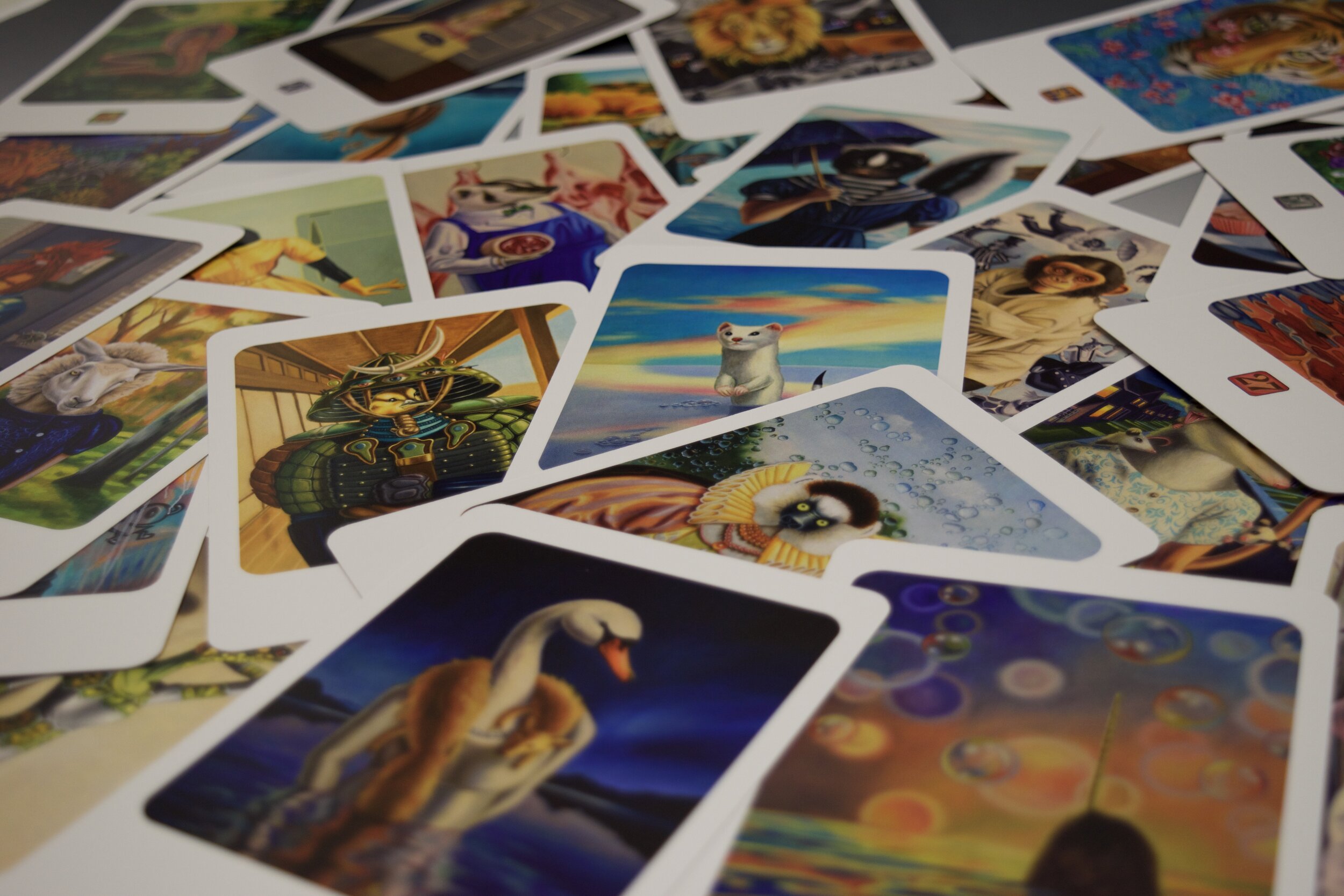
For Groups and Kids
Better with more of us.
Group interaction is a terrific way to engage with the cards. Any of the practices with the cards are enhanced by working with others, and can validate and support your process. A regular gathering to share findings and practice with the cards is an ideal situation for deepening the cards’ ability to transform and uplift.
Ways to practice in a group
-
Your deal
Deal the cards like a regular deck. Players imagine their hand is their family or work buddies. Write stories or make up scenarios for how your characters would relate to each other. Share your insights.
-
Lay it all out.
If there’s enough room, lay out all cards face up. Players walk around and pick a few cards that resonate with an agreed-upon theme. Write about it your ideas in a poem, prose, or a random stream. Share.
-
Discuss Original Intention
Read about a card’s original intended meaning and discuss how each person relates to the essay. An in-depth discussion leads to powerful bonding and personal discoveries.
Fun for kids, too.
The images of the cards are inspired by pictures from children’s books and are sure to capture the attention of young audiences. The intuition, imagination, and honesty of kids are the best attributes for giving fresh perspectives to games or therapeutic activities.
Kid Activities
-
What would happen?
Hand out one card to each child. Tell them a life situation, and have them write about how their character would respond to the circumstance. Possible situations: The animal receives a gift from a friend. The character is on a boat at sea. A knock is heard at the door.
-
Family or friend?
Set two cards out per child and ask them to write or tell about the relationship they see between the two cards. What is the relationship?…Friend or relative? How do they feel about each other? What do they do together? Make up a conversation between them.
-
How do you feel?
Show a single card to the kid(s.) Have them write or tell what feelings it makes them think of. If needed offer examples such as sad, mad, guilty, peaceful, excited. Extra credit: Have them tell why the image makes them feel that way.

